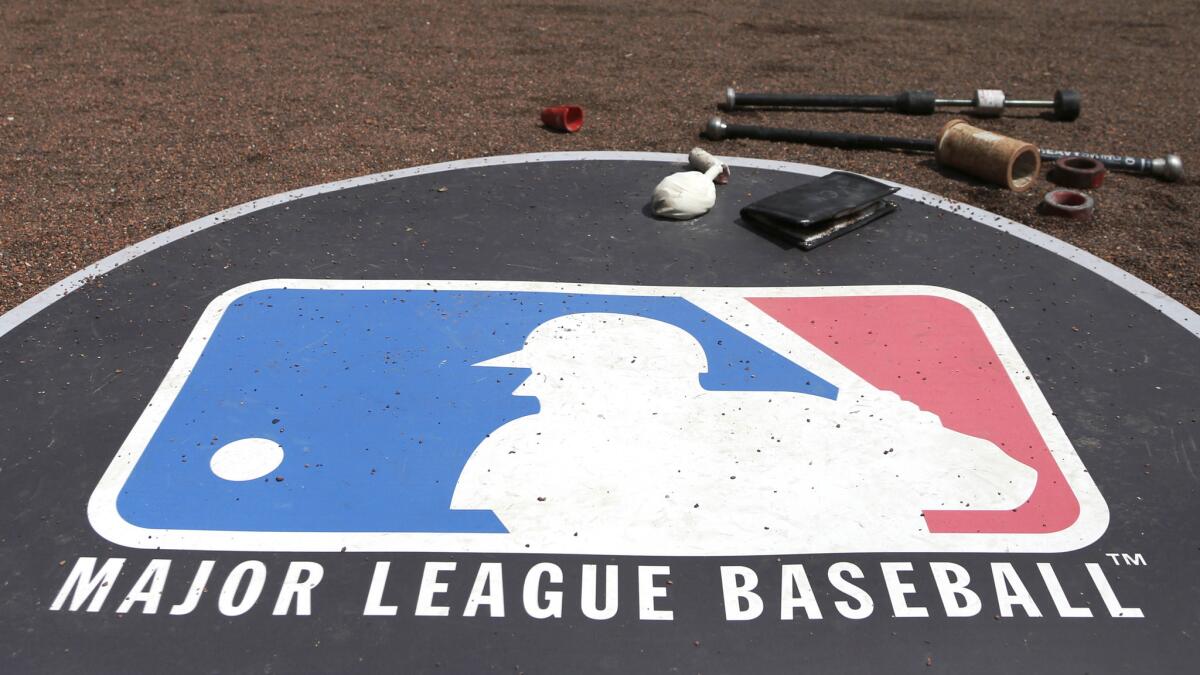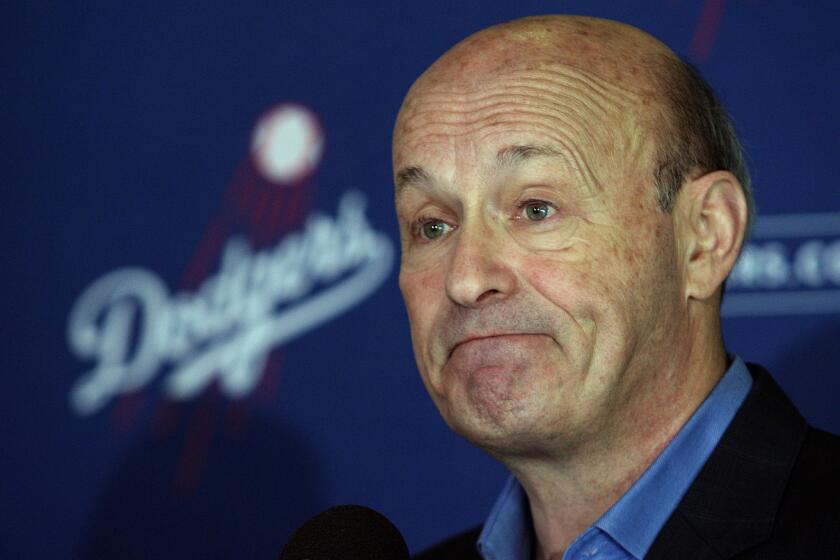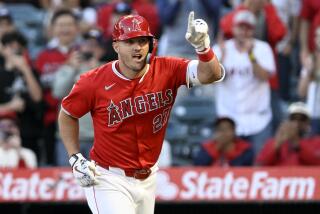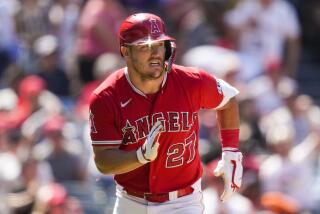MLBâs economic proposal includes sliding scale for salary cuts

After major league players made clear they had no interest in participating in a revenue-sharing plan for an abbreviated 2020 season, owners Tuesday proposed that players instead accept a sliding scale of pay cuts.
While all players would be expected to take less than a prorated salary, the players with the highest salaries would lose the greatest percentage of pay. With players already having agreed they would receive no pay for canceled games, the proposal set up a potential scenario for some of the gameâs greatest stars to play about 50% of the season for about 25% of their previously guaranteed salaries.
With the window closing on an agreement to play even half a season, the official statements from the two parties did not exude compromise.
From the Major League Baseball Players Assn.: âThe proposal involves massive pay cuts and the union is extremely disappointed. Weâre also far apart on health and safety protocols.â
From MLB: âWe made a proposal to the union that is completely consistent with the economic realities facing our sport. We look forward to a responsive proposal from the MLBPA.â
Under the proposal, players making minimum salary would play the half-season schedule for about 46% of their 2020 salary, according to details first reported by ESPN. The highest-paid players would play for about 22% of their 2020 salary.
However, players could be subject to an additional decrease, according to a document reviewed by The Times. If an expanded postseason is not approved by players or the postseason television revenues do not increase in line with the ownersâ projections, the highest-paid players would play for about 16% of their 2020 salary.
âInteresting strategy of making the best most marketable players potentially look like the bad guys,â Milwaukee Brewers pitcher Brett Anderson said on Twitter.
Although the average major league salary is about $4 million, that figure is skewed by the highest salaries. The median salary for players â half make more, half make less â is closer to $1.5 million.
On the Angelsâ projected roster, which could expand to 30 for this shortened season, nine players were set to make more than $4 million this year. Four players ââ Mike Trout, Albert Pujols, Anthony Rendon and Justin Upton â were set to make more than $20 million apiece.
If the MLBPA were to accept this proposal, Troutâs salary could fall from about $36 million to about $8 million. However, if the MLBPA were to insist on equal pay cuts irrespective of salary â better protecting the likes of Trout, Pujols, Rendon and Upton â a player making the league minimum of $563,500 could lose much more than half that salary, in what might be the only season of his major league career.
The Dodgers on Tuesday informed full-time employees that the organization will implement a tiered system of pay cuts starting June 1.
In the countryâs other major sports leagues, all with a salary cap, players get a percentage of league revenue. The MLBPA has remained steadfastly opposed to a salary cap, so lower revenues do not automatically trigger lower salaries.
Instead, commissioner Rob Manfred leveraged a ânational emergencyâ provision in the collective bargaining agreement to reach a March 26 agreement in which players agreed to a prorated salary for any games played this season.
Owners say language in the agreement calls for a salary renegotiation if games are played without fans, since teams would be unable to make money from tickets, parking, concessions and merchandise. Players have received some â but not all â of the documents the union requested to support the claimed financial losses.
For weeks, word has circulated about the possibility of a July 4 start to the season, leaving players wondering why owners claiming urgently needed financial relief did not provide an initial economic proposal until Tuesday, with little more than two weeks before spring training is targeted to resume.
The revenue-sharing talk had been a trial balloon, and owners said they wanted to respect the negative reaction and take the time to craft an alternative proposal.
Players remain concerned that owners might try to rush the union into an unwise deal, with financial ramifications that could extend beyond 2020, or else cast blame at the union for blowing baseballâs chance to return before the NBA and NHL.
Staff writer Jorge Castillo contributed to this story.
More to Read
Go beyond the scoreboard
Get the latest on L.A.'s teams in the daily Sports Report newsletter.
You may occasionally receive promotional content from the Los Angeles Times.












